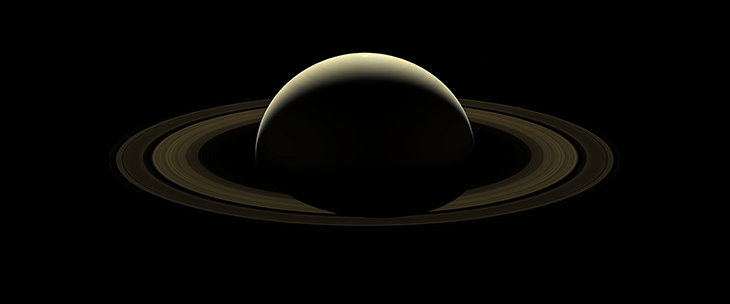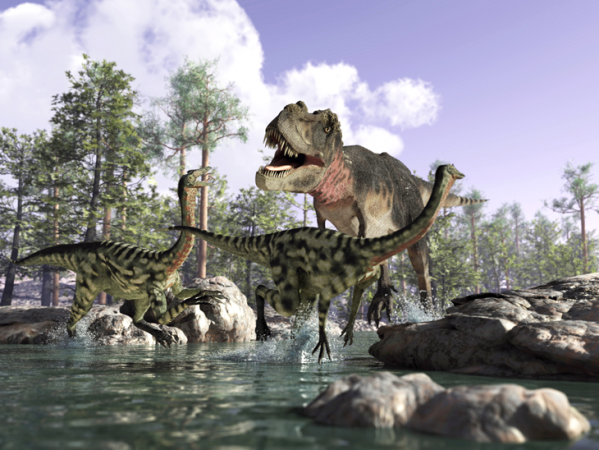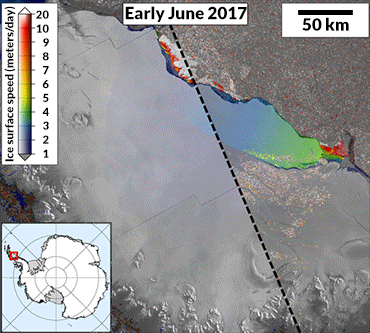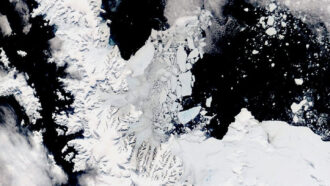Revisit 2017’s most important stories
Here’s the year in review, focusing on the top 10 major stories

What were our editors' top stories of 2017? Read on to find out.
Nancy Moulding/SNS
Science is not just the static set of facts you might find in a textbook. It’s an endeavor to understand the world — and universe — around us. New discoveries are being made all the time. Some add small pieces of information to what is already known. Others fundamentally alter our thinking.
This year was full of major scientific events and discoveries. Don’t feel bad if you missed them. You were probably reading stories about bits of science that affect your everyday lives.But here’s your chance to catch up on what you may have overlooked.
10. A new continent
Every U.S. schoolkid learns that there are seven continents: Africa, Antarctica, Asia, Australia, Europe and North and South America. Scientists usually combine two of those into the larger Eurasia, but they largely have recognized the same land masses. Now a group of geologists has proposed adding a new continent to the list: Zealandia. Most of the continent is submerged beneath the ocean’s surface. But some of it — mostly the nation of New Zealand — peeks above the waves. There’s no official way to add a continent to the world’s master list. But if enough people start referring to Zealandia as a continent, a continent it will become.
“This story had to make the top 10 list,” says Science News for Students (SNS) staff writer Bethany Brookshire. “We can’t be old and crusty about how our world is built. New discoveries are at the core of what science is about.”
9. The death of Cassini

The Cassini mission blasted off from Earth back in 1997, then spent nearly seven years traveling to Saturn. There, the spacecraft was supposed to spend three years studying the ringed planet. In fact, it extended that visit — by a lot. It spent 13 years and 76 days orbiting Saturn, before intentionally making a deathly dive into the planet on September 15. Why? NASA did not want to risk contaminating Saturn’s moons. Over the years, the Cassini mission made an amazing number of discoveries, from finding ingredients for life on the moons of Titan and Enceladus to revealing massive storms that have raged for decades. SNS contributing editor Elizabeth Preston says: “An intrepid robot crosses the solar system, sends back beautiful photos of Saturn, carries out a daring final mission inside the planet’s rings, then plunges to its death to protect (possible) alien life — what’s not to love about this story?”
8. Our bones produce an array of hidden hormones
Your skeleton provides the internal structure for your body, helping to hold you up and to protect soft tissues. Those bones are constantly changing, with cells turning over all the time. This keeps everything strong and healthy. But studies in mice are showing that our bones are more active than you would ever think. They produce hormones. These are natural chemicals that act as messengers within the body. Bone hormones, studies have found, chat with organs like the brain, kidneys and pancreas. “We often see bones as just a kind of a dead scaffold that supports our meaty selves,” says Brookshire. “But this story showed just how alive they are, and how much they might do for us every day.”
7. New evidence about what killed the dinosaurs

An asteroid wiped out the dinosaurs 66 million years ago. Well, maybe that’s true, but it might not be. Scientists have been digging up new evidence that shows the tale of the dinos’ demise is more complex that what had been thought. There was a devastating asteroid impact off the coast of what is now Mexico. It may have thrown so much debris into the sky that the sun was blocked out for years. But life on this planet may have already been in trouble from supervolcanoes that erupted for 750,000 years in what is now India, studies have shown. “This is a classic scientific whodunnit. Like detectives at a crime scene, scientists are studying the clues to try to find the killer: A giant asteroid? Volcanoes? Both? Surprisingly, they still can’t agree on the answer,” notes Preston.
6. Implicit biases — we’ve all got them
Though we might not like to admit it, everyone harbors beliefs and feelings about other people based on stereotypes. These are views on gender, race, religion or other traits that are not founded in fact. The ones that we’re not aware of have a name: implicit biases. But scientists can help us to identify them in ourselves, SNS revealed, so we can do something about them.
“Even though we’re often not aware of these implicit biases, they can lead us to treat other people unfairly,” says SNS contributing editor Siri Carpenter. “This story helps young people understand how these biases creep into our minds so they can recognize and combat them — and help shape a fairer society.”
5. Gravitational waves solve cosmic mysteries
The existence of gravitational waves was confirmed only just last year. That’s when scientists detected these faint waves from a collision of black holes. (The discovery garnered a Nobel prize in physics for three scientists in October.) Now researchers are using these waves to make fundamental discoveries about the universe. Two months ago, scientists announced that they had detected gravity waves from a smashup of two neutron stars. Such collisions, they say, are responsible for all the gold, silver and platinum found in the universe.
“It’s rare that a scientific discovery can truly be called ‘explosive’ and ‘Earth-shattering,’” says Carpenter. “Astrophysicists working at some 70 sites around the world used this new tool to point their telescopes at the right spot in the sky. And when they did, they witnessed a cosmic crash of two neutron stars, something no one had seen before. Now that’s explosive!”
4. The Internet of Things might be a problem
More and more “smart” items are now being sold. These are everything from basketballs that give tips for better play to refrigerators that keep track of what’s inside to toilets that automatically flush and text you when there’s a leak. Collectively, they’re known as the Internet of Things. These objects promise to make life better. But there are downsides, like the potential for data to be stolen or for the items to be hacked and turned into spies.
“Who among us wouldn’t like electronics to make our lives easier and anticipate our every want? With such systems on the horizon, I wanted to let teens know what to expect,” says SNS editor Janet Raloff. “This series shows what good such systems could bring — and also what hidden risks they might pose to our security.”
3. The Larsen C iceberg breaks off Antarctica

At the beginning of the year came word that a massive crack in an Antarctic ice shelf named Larsen C had abruptly grown by 18 kilometers (11 miles). Scientists warned that soon a new massive iceberg could break off the continent. And that finally happened in July. Nearly a million metric tons of ice broke off in an iceberg the size of Delaware. The ice will eventually break apart and melt. It won’t have any effect on sea level, since it was already sitting on water. But it could herald problems for the future.
“The Larsen C ice shelf is, of course, just one small part of Antarctica,” Adam Booth told Science News. He’s a geophysicist at the University of Leeds in England. “What is worrying is that we’re seeing trends in several ice shelves that tend towards decreasing stability. Should they continue along these trends, we could be seeing the start of increased mass loss from the Antarctic continent.” And that ice, once it ends up in the ocean, could raise sea levels around the world.
2. Hurricanes wreak havoc in Texas, Florida and Puerto Rico
This year’s Atlantic hurricane season was particularly destructive. It also ranks as the most expensive in U.S. history. That’s because of three storms: Harvey, Irma and Maria. Harvey struck Houston, Texas, in late August, sitting over the city for days. Then Irma wreaked havoc across several Caribbean islands before traveling up through Florida. Finally, hurricane Maria blew through Puerto Rico, a U.S. territory. More than two months later, people are still cleaning up. And on Puerto Rico, many neighborhoods still are without power or water.
“As these record-breaking storms were barreling down on a host of communities, there was no shortage of news coverage on the threats they posed,” notes Raloff. “I wanted our magazine to focus instead on the science that explained why these late summer cyclones had evolved into particularly dramatic or unusual events.” The series of stories that came from that covered Harvey’s record rains — including how many bathtubs those rains would fill — and dangerous tornadoes. We delved into Irma’s missing coastal water and incredible power. And we discovered why we may never know just how bad the rains were during Maria.
1. A solar eclipse grabs America’s attention
On August 21, a total solar eclipse traveled across the United States, from Oregon to South Carolina. Eclipses aren’t rare, but this one was special because it was accessible to so many people. In fact, some 215 million U.S. adults witnessed the eclipse either in person or electronically. (Sorry, but there’s no count for U.S. kids.) “I will always remember how the sky went black, and all the kids I was watching with started screaming with excitement. We all got to experience the joy of science together,” recalls Brookshire.
Scientists not only watched the eclipse, but many also used it as an opportunity for scientific study. They asked questions including: Where does the solar wind come from? Why is the corona so hot? And what do animals do in an eclipse? The answers from this research are still to come. But people in the United States will soon get another chance to experience a solar eclipse: One will travel from Texas to Maine in 2024.







